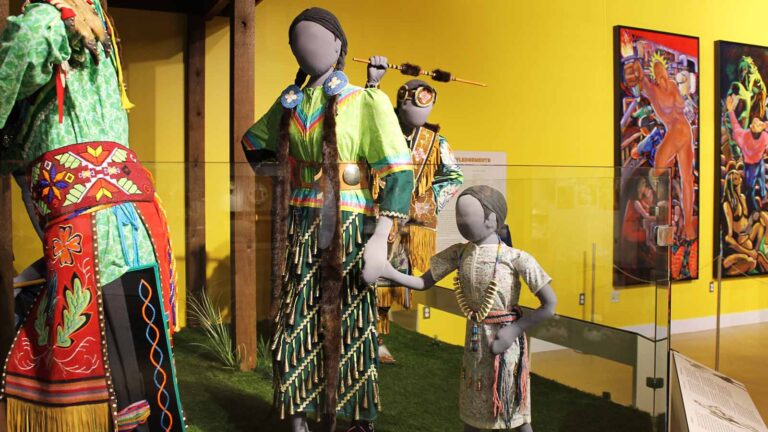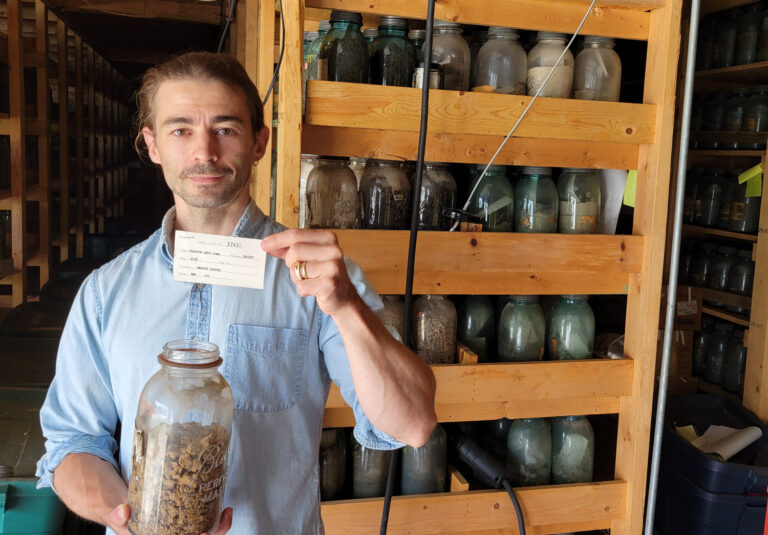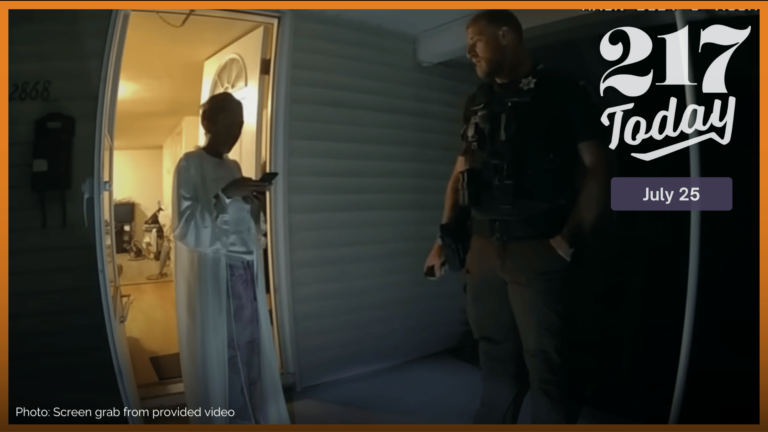URBANA – A child-sized mannequin holds an adult figure’s hand in the corner of the North American room in the Spurlock Museum.
The child is wearing a small pink-and-white dress embellished with jingle cones.
“That’s one of my favorites, because this little time lapse shows the value that we put on our younger generations, that they’re always right there watching us,” said Dylan Bizhikiins Jennings.
Jennings is a member of the Bad River Band of Lake Superior Anishinaabe. He’s also curator of the new exhibit,“Welcome to the Pow-wow.” The dress belongs to his daughter.
The show is part of a growing movement to heal past harms committed against Native Americans. Other efforts include a bill requiring Native American history in public schools and new commitment by the University of Illinois to repatriate ancestral remains.
The exhibit will run for five years, with regalia like the jingle dress swapped out every year.
New recognition of Indigenous experts
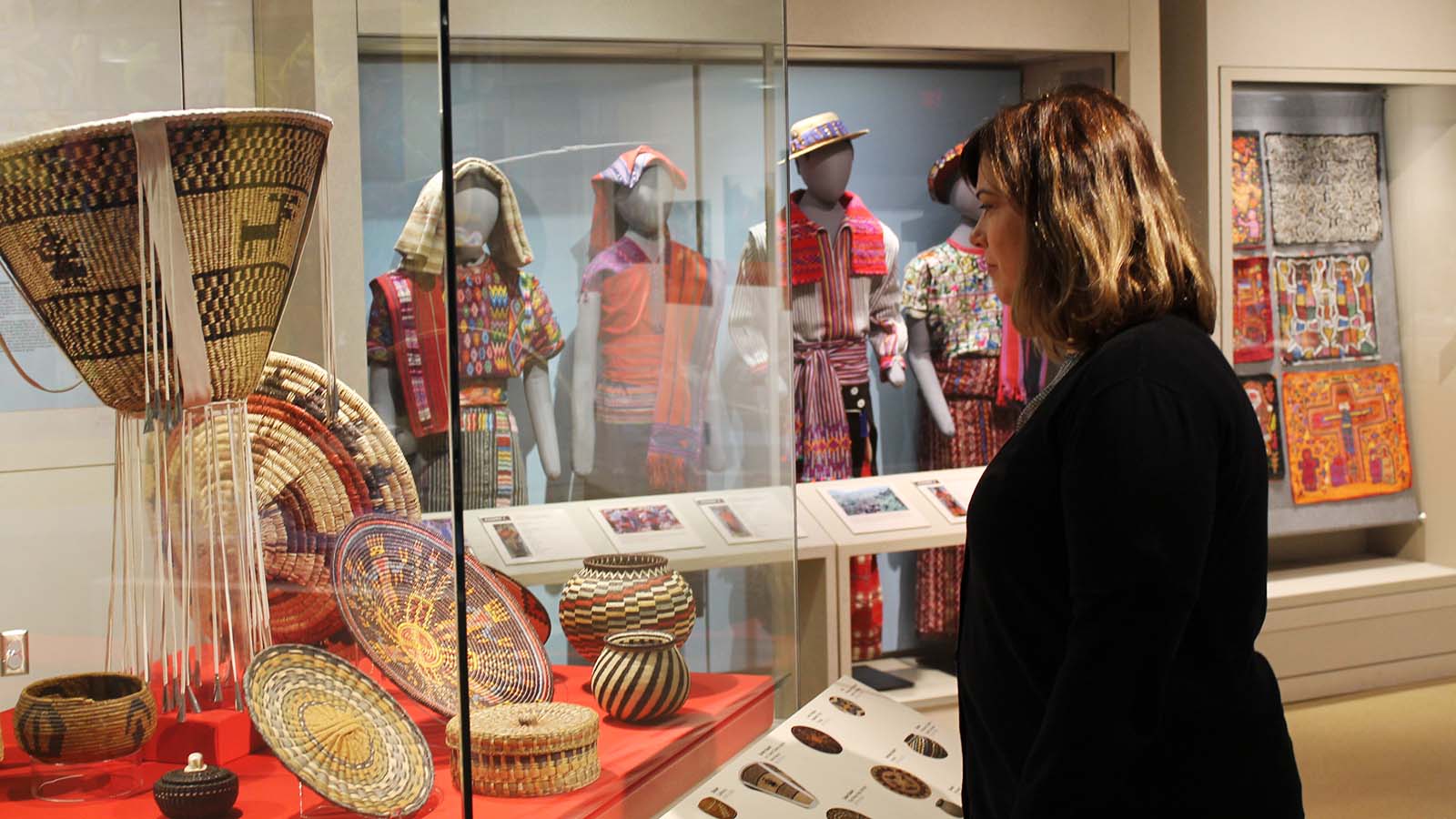
All of the artwork is by Native American artists, but that wasn’t always the case for the Spurlock.
“It was really important for us to have Native Americans represented as modern, vibrant communities,” said museum director Elizabeth Sutton.
When Sutton took over six years ago, most of the artwork had been donated by the Laubins, a white couple.
She felt the collection blurred the lines between what the Laubins’ Native American friends had created and what Reginald Laubin made on his own. The curators didn’t always know which pieces were which.
“He was trying to create these pieces in the style and tradition of his Native American friends and these communities, but it’s just us lying, saying we don’t have time and money to do the research and just putting it up,” Sutton said.
So she took down the display.
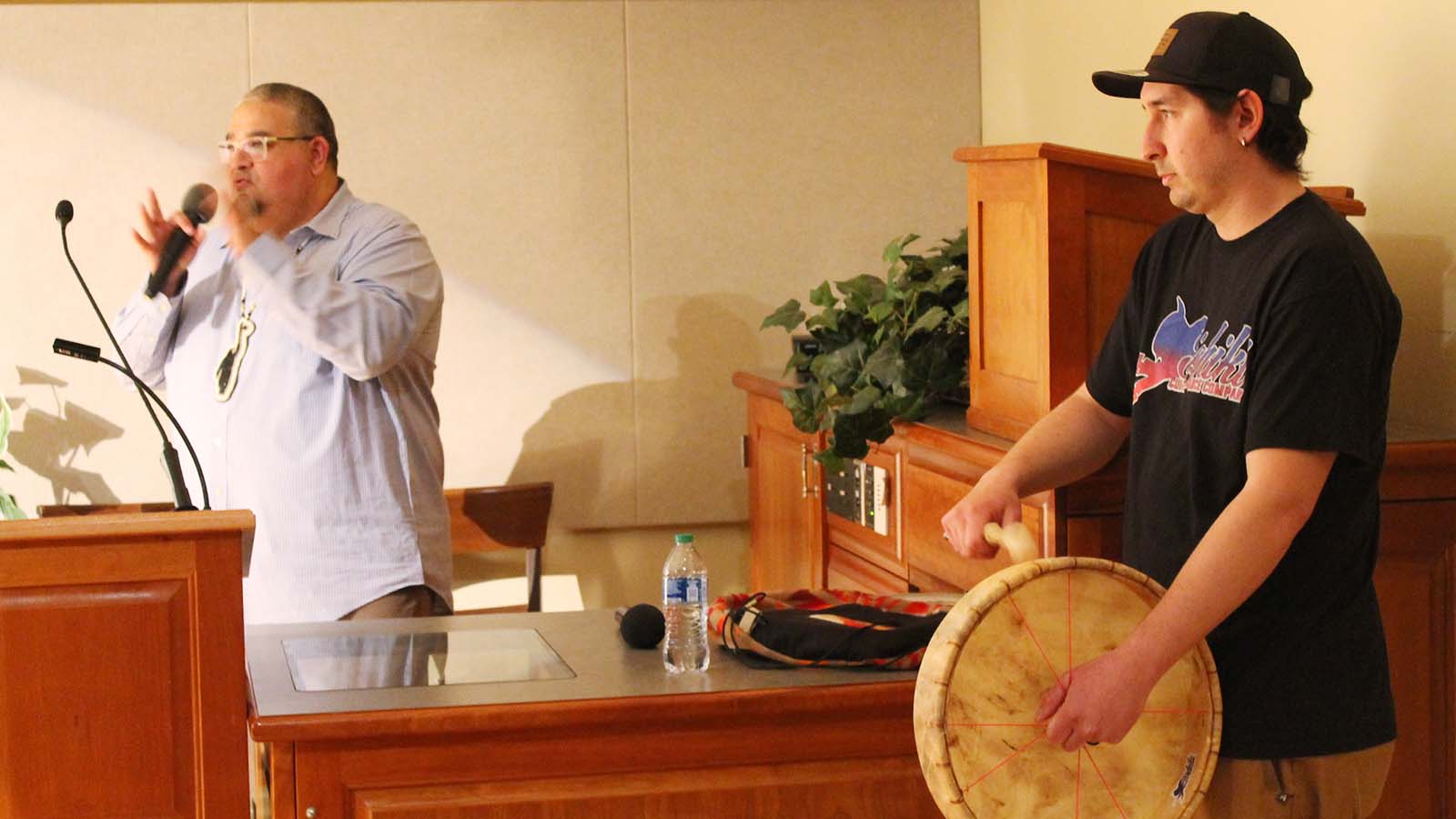
Around this time, Dylan Jennings visited the university as founder of the Bizhiki Culture and Dance Company.
During a tour, Sutton pointed out the empty space where the Laubin collection used to be. That’s when the two decided to collaborate.
“We’ve really shifted to say that lived experience is just as important — if not more important — for educational purposes,” Sutton said. “Nobody wants to hear my voice about something in our collection. If it’s really going to move you, it has to be that authentic voice of somebody who has that cultural knowledge about those objects.”
For Jennings, the goal was to educate a community that had long held onto a mascot that stereotypes Native Americans,Chief Illiniwek. The University of Illinois retired the mascot in 2007 and has not picked a new one.
“We’re cognizant of the history that this university in particular has had with the mascot and the kind of misrepresentation of Native people here on campus,” Jennings said. “Rather than scolding someone, we believe education is a really powerful mechanism to change the heart, change the mind.”
Pow-wows are modern history
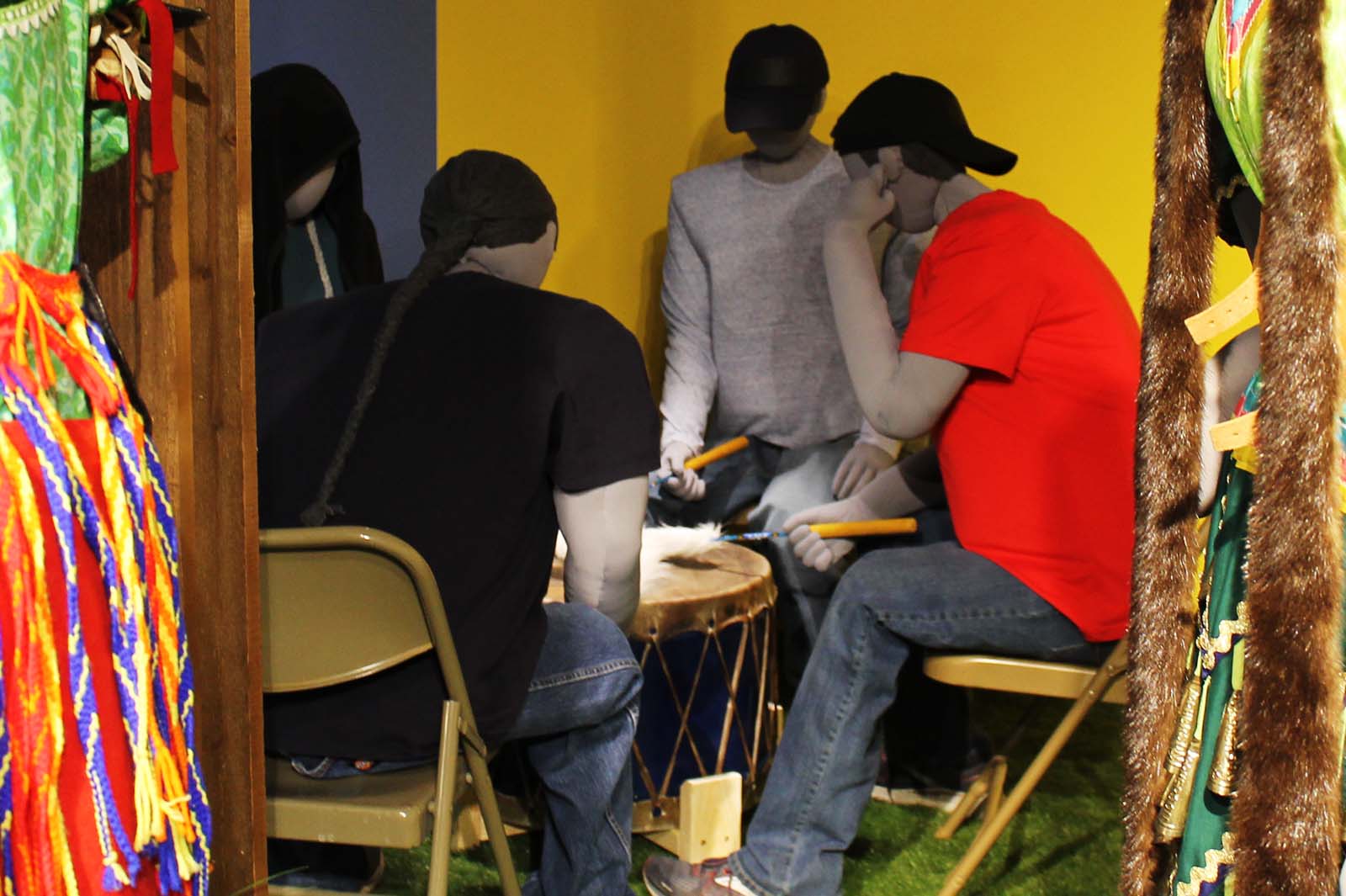
In the 1890s, the federal government was transitioning from waging war against Native American nations to assimilating them and eliminating their culture. Many Indigenous dances were banned.
“We had to be secretive as far as doing our ceremonial practices at home and keeping our things underground. But we also found ways to do things in public,” said Jason Schlender.
Schlender, also named ManidooNoodin, is a former tribal leader from the Lac Courte Oreilles Ojibwe reservation in Wisconsin and part of the Bizhiki Culture and Dance Company. He was a consultant for the exhibit.

According to Schlender, pow-wows have evolved over time as a tourist attraction, economic engine and way to maintain community traditions.
Modern touches are visible throughout the exhibit, from a “vendor stand” of furs, beads and a CD to contemporary art by Plains Cree artist Josh Atcheynum.
Many of the descriptions and placards throughout the exhibit were written by Schlender.
“We don’t need anybody else to tell our story. We’re perfectly functional. We’re perfectly educated enough,” Schlender said.
Model for other museums?
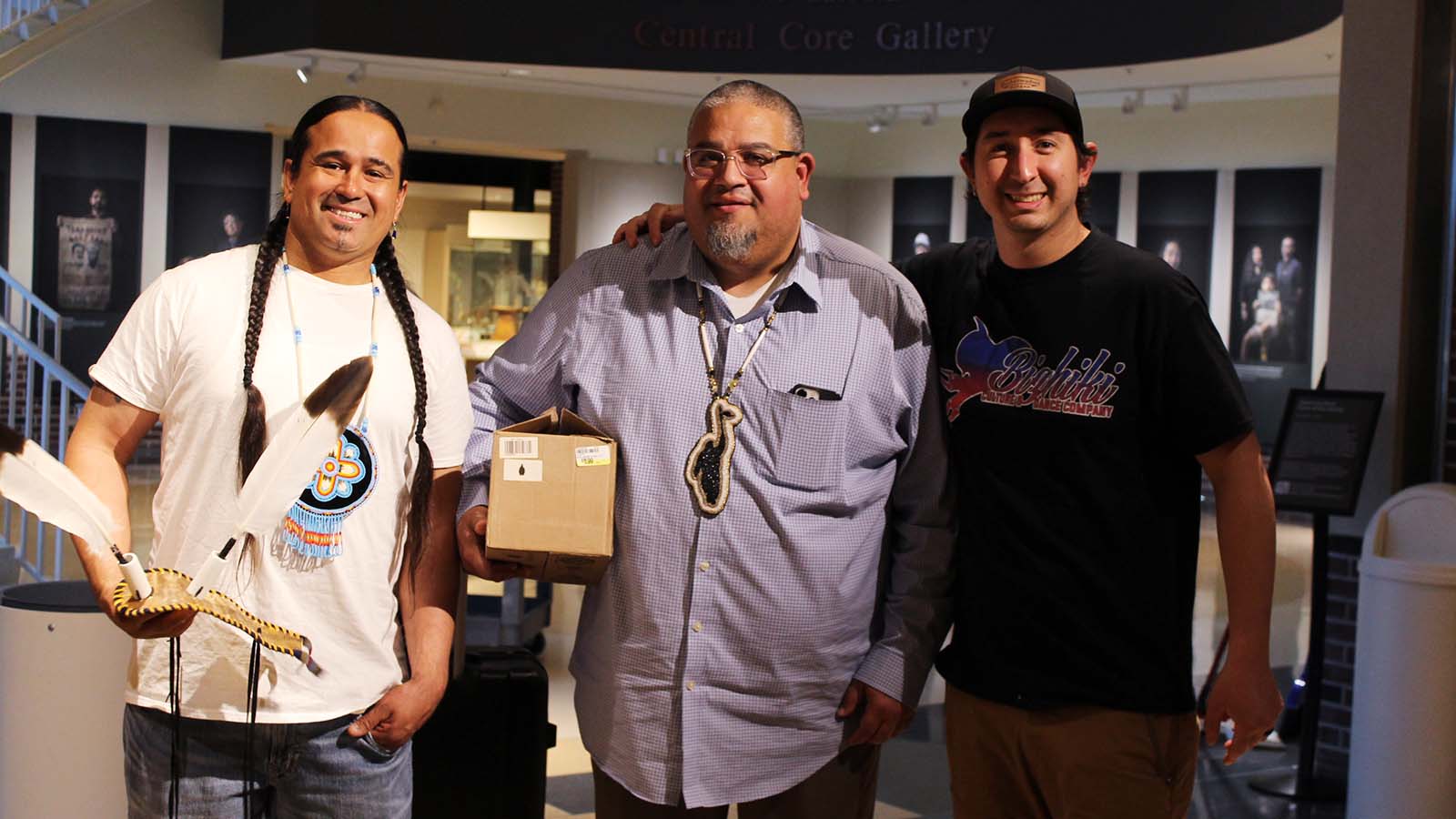
All of this is a first for Dylan Jennings, but he hopes it won’t be the last.
“The exhibit itself is a great starting point for more good conversations to come and more bridge building between our tribal communities and universities.”
As the dance company keeps traveling, Jennings said the regalia will too. All of it is on loan and still owned by the artists and tribes.
“We love being able to use them for educational purposes, but they’re very much meant to be used in our circles that are supposed to be danced with. Someday you might see these dancing at a pow-wow with somebody.”

